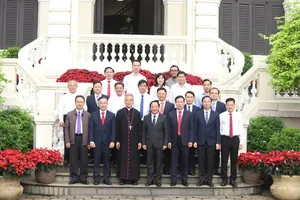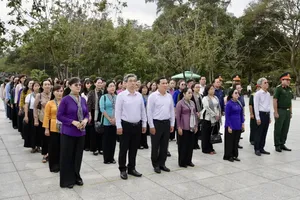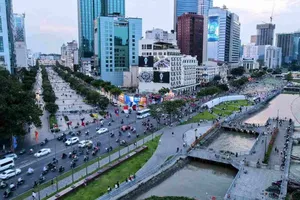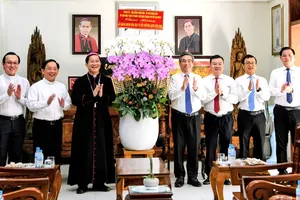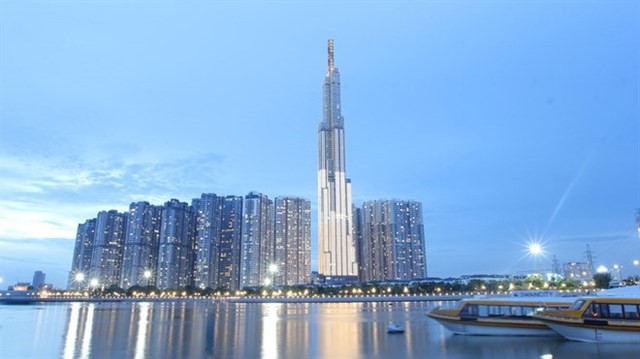
Developers said authorities remove hindrances that had been faced by 124 real estate projects, and this would help significantly increase the supply of apartments.
In the first five months of the year, the market did not see the same feverishness that was evident in the last three years.
According to DKRA Vietnam, only around 500 plots of land were sold in the period compared to over 4,000 in the same period in 2017.
No land project was launched in the eastern area, a real estate hot spot in recent years.
As a result, frauds have begun to put up plots in non-existent projects for sale. Authorities in districts 7, 9 and 12 have warned about these projects.
According to the District 12 authorities, illegal levelling of and construction of infrastructure on agricultural land have been reported in Thanh Xuan ward.
It was difficult for them to stop and punish the culprits because the work was done at night and on holidays, they said.
The ward People’s Committee has also found people offering these lands for sale.
It has warned the public not to buy these unauthorised lands.
In the apartment segment, only 15 projects were launched in the first five months with 3,000 apartments compared to over 10,000 in the same period last year.
The chairman of the HCMC Real Estate Association, Le Hoang Chau, said there is insufficient supply of apartments because the city has curtailed licensing of new projects pending an inspection of lands and the legal status of many existing projects.
A spokesperson for the city People’s Committee said the population has increased rapidly since 2009, forcing the demand for housing up year after year.
This has caused land and house prices to increase sharply, especially in districts near the city centre such as Phu Nhuan and Binh Thanh.
According to Dau Tu Bat Dong San (Real Estate Investment) magazine, houses near the city centre, which used to be priced at less than VND10 billion now cost US$1 million (about VND23 billion).
The average apartment price in District 9 increased from VND24 million per square metre last year to VND29 million now, and in District 2 from VND35 million to VND40 million.
Developers are expecting the market to look up after five months in the doldrums.
Le Tien Vu, deputy director of Cat Tuong Group, said authorities’ efforts to resolve the problems faced by the property market bring a “positive” sign.
Deputy Chief of the Department of Construction’s house development division Tran Quoc Dai said the world has seen factories moved from China to Vietnam, with many of them heading for HCMC.
To cope, the city has built another industrial park in the Sai Gon South Area and hopes to expand existing industrial parks and complexes.
This is also a boost to the real estate market, with demand for new accommodation set to surge, he added.
In the first five months of the year, the market did not see the same feverishness that was evident in the last three years.
According to DKRA Vietnam, only around 500 plots of land were sold in the period compared to over 4,000 in the same period in 2017.
No land project was launched in the eastern area, a real estate hot spot in recent years.
As a result, frauds have begun to put up plots in non-existent projects for sale. Authorities in districts 7, 9 and 12 have warned about these projects.
According to the District 12 authorities, illegal levelling of and construction of infrastructure on agricultural land have been reported in Thanh Xuan ward.
It was difficult for them to stop and punish the culprits because the work was done at night and on holidays, they said.
The ward People’s Committee has also found people offering these lands for sale.
It has warned the public not to buy these unauthorised lands.
In the apartment segment, only 15 projects were launched in the first five months with 3,000 apartments compared to over 10,000 in the same period last year.
The chairman of the HCMC Real Estate Association, Le Hoang Chau, said there is insufficient supply of apartments because the city has curtailed licensing of new projects pending an inspection of lands and the legal status of many existing projects.
A spokesperson for the city People’s Committee said the population has increased rapidly since 2009, forcing the demand for housing up year after year.
This has caused land and house prices to increase sharply, especially in districts near the city centre such as Phu Nhuan and Binh Thanh.
According to Dau Tu Bat Dong San (Real Estate Investment) magazine, houses near the city centre, which used to be priced at less than VND10 billion now cost US$1 million (about VND23 billion).
The average apartment price in District 9 increased from VND24 million per square metre last year to VND29 million now, and in District 2 from VND35 million to VND40 million.
Developers are expecting the market to look up after five months in the doldrums.
Le Tien Vu, deputy director of Cat Tuong Group, said authorities’ efforts to resolve the problems faced by the property market bring a “positive” sign.
Deputy Chief of the Department of Construction’s house development division Tran Quoc Dai said the world has seen factories moved from China to Vietnam, with many of them heading for HCMC.
To cope, the city has built another industrial park in the Sai Gon South Area and hopes to expand existing industrial parks and complexes.
This is also a boost to the real estate market, with demand for new accommodation set to surge, he added.

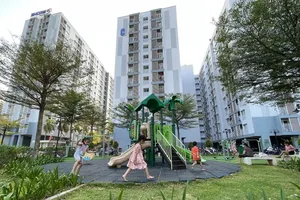

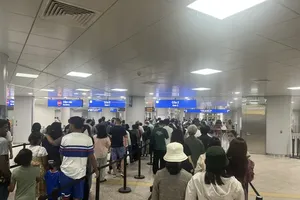
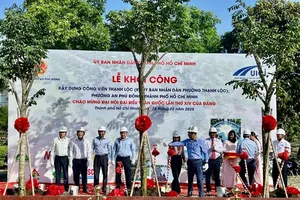

)

